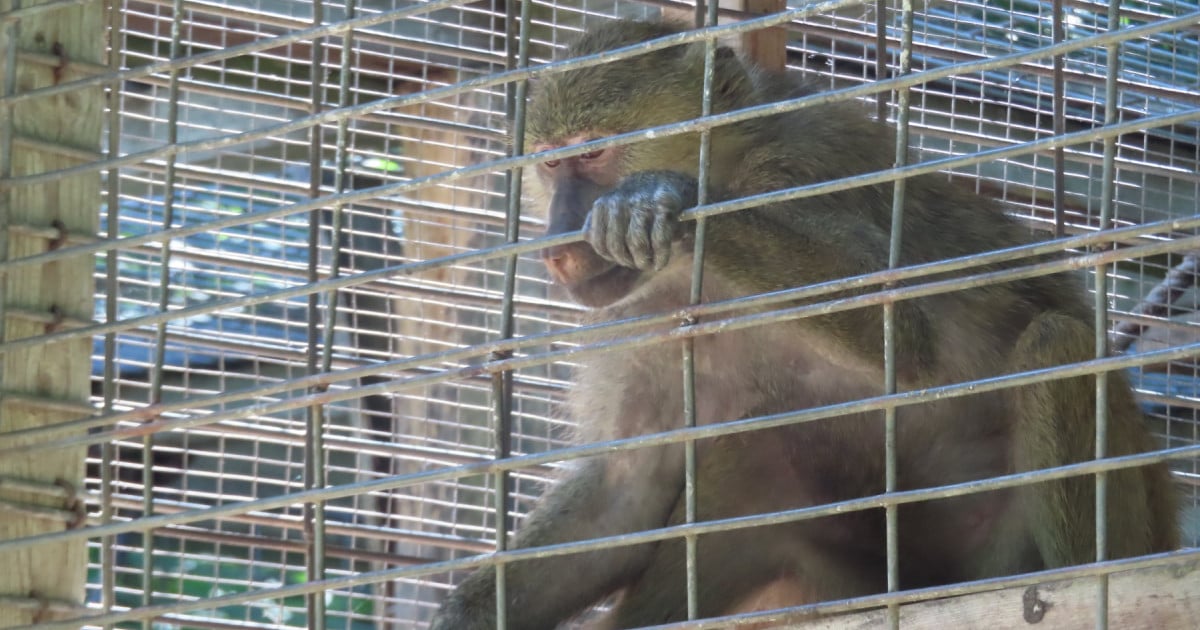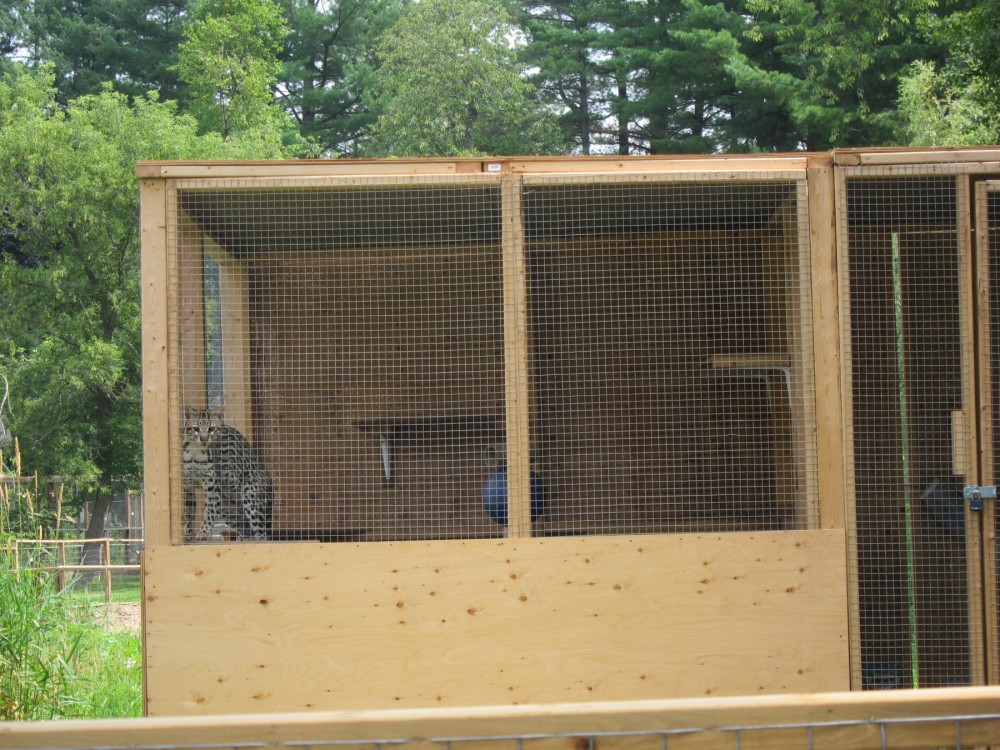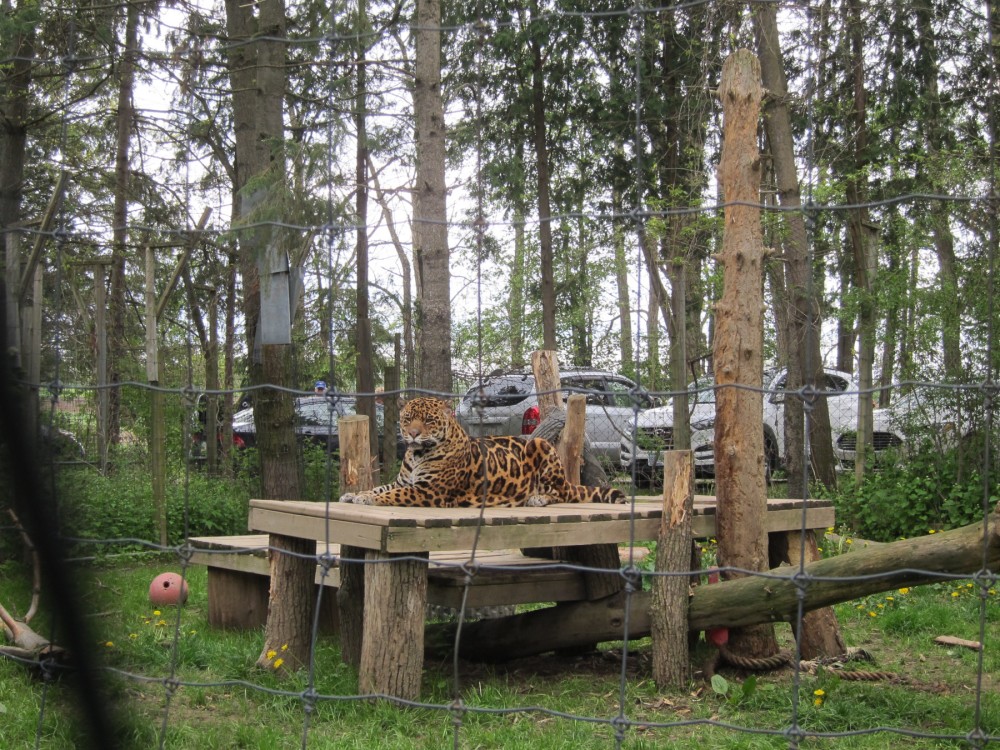Speak out for captive wildlife in degrading roadside zoos
There is a critical situation in Ontario: due to a lack of provincial zoo regulations, there are over one thousand wild animals being held captive in degrading conditions.

A roadside zoo is a type of zoo or animal exhibit that is typically located along the side of a road or highway, often in a rural area. Unlike larger, accredited zoos that are designed to provide a natural habitat for animals, roadside zoos are often small, poorly-maintained facilities that may house animals in cramped, unsanitary conditions.
Most roadside zoos operate according to their own standards and don’t have trained, professional animal care staff, or the finances necessary to provide proper animal care, housing, and safety for animals and the public.
Roadside zoos set the poorest standard for how we see and treat captive wildlife.
The types of animals found in roadside zoos across Canada varies widely. While some roadside zoos may specialize in certain types of animals, others may have a more diverse collection of species, both exotic and native.
Some of the most commonly found animals in these types of facilities include:
Many roadside zoos have been criticized for their poor treatment of animals, including inadequate housing, lack of veterinary care, and inadequate food and water. Some have even been cited for violations of animal welfare laws.
Enclosures are designed to enhance public viewing, allowing visitors to come close to animals, not for the welfare of animals. Cages are often grossly undersized, without space for animals to exercise or to perform natural behaviours, and usually lack shelter, privacy, enrichment and hygiene.
The size of the enclosures is often inappropriate for the species and lack any ability for the animal to engage in natural behaviours like swimming, climbing, and running.
The size of the enclosures is often inappropriate for the species and lack any ability for the animal to engage in natural behaviours (e.g., swimming, climbing, running).

The regulation of roadside zoos in Canada falls under provincial jurisdiction, so the laws and regulations regarding their operation can vary across the country.
Ontario is the only province that does not have any regulations related to the keeping of exotic wild animals in captivity. A provincial licence is only required when keeping native wildlife in captivity.
This means that a roadside zoo could have a permit to keep a native wildlife species (such as a black bear) and when an enforcement officer comes to check on the conditions the bear is kept in, they are unable to comment on the enclosure next door that might hold a lion, tiger or other wild animals not native to Ontario.
While the prescribed conditions are minimal, vague and poorly enforced for native wildlife, Ontario does not have any licenses and barely monitors facilities that keep exotic wild animals. Instead, individual municipalities are responsible for providing oversight and control of facilities keeping these animals within their jurisdiction and for dealing with any problems associated with them.
In many Ontario cities, there are no regulations against keeping exotic wildlife like a tiger or a monkey; to open a zoo, no training or education is necessary, and no business, financial or emergency planning is required. Almost anyone can acquire wild animals, nail together a few cages, stick up a sign and call themselves a zoo. These are the places we call roadside zoos.
Roadside zoos commonly breed their animals or acquire new ones from other zoo facilities and private collectors of wild animals, including exotic pet owners. The captive breeding practices at these facilities usually focus on species that are already overrepresented in captivity, such as monkeys and lions.
These breeding efforts lack scientific basis, and the genetic history of the animals is often unknown, rendering them unsuitable for official conservation breeding programs. Roadside zoos often use breeding as a means of attracting visitors with baby animals, using them for animal-visitor interactions and to maintain their captive animal populations.
Furthermore, it is not uncommon for roadside zoos to sell their animals to other roadside zoos or to exotic pet owners.
Roadside zoos often justify their shortcomings by citing their supposed contributions to public education and conservation. However, these claims don’t hold up to scrutiny.
The educational value of these facilities is questionable. The signage at many roadside zoos is poorly designed, difficult to read, and frequently contains inaccurate information. In most cases, only the name and basic information about the animals are displayed, while other forms of educational programming that are common in professional zoos are absent.
Similarly, roadside zoos make little meaningful contribution to species conservation. Endangered species such as lemurs, tigers, parrots, and tortoises are rarely rehabilitated and released back into their natural habitats.
One of the main concerns with roadside zoos is the safety of visitors and the surrounding community. These facilities often do not have the same safety standards and protocols as accredited zoos and may not have adequate fencing or other safety measures in place to prevent animals from escaping or attacking visitors. Our own investigations found tigers and other dangerous animals kept behind fences that were too low, and stand-off barriers that prevent direct interactions between wild animals and the public are missing in many cases.
Visitors may also be encouraged to engage in risky behavior, such as feeding or petting the animals, which can and have, resulted in bites, scratches, and other injuries to zoo visitors.
Interacting with wild animals also increases the risk of zoonotic diseases – diseases that are transmitted from animals to humans. This risk becomes even greater when animals are stressed, which is often the case in roadside zoos. It is not unusual to observe animals in such zoos displaying symptoms of boredom, frustration, anxiety, and other indicators of stress.
There is often a lack of sufficient safety barriers between the guests and the animals.

As animal lovers, we appreciate the desire to see animals up close and personal.
The solution is to not keep wild animals in captivity. We simply cannot meet their complex welfare needs in captivity.
There is a critical situation in Ontario: due to a lack of provincial zoo regulations, there are over one thousand wild animals being held captive in degrading conditions.
News
Ontario is the “Wild West” when it comes to oversight over zoos, leaving animals to suffer and putting human safety at risk.
Blog
Join us in calling on the Ontario government for stronger provincial regulations, meaningful enforcement and making this year, the last year for roadside zoos
Blog
About 70% of facilities that keep exotic wild animals in Ontario can be described as a roadside zoo. Learn more about roadside zoos and what you can do to help.